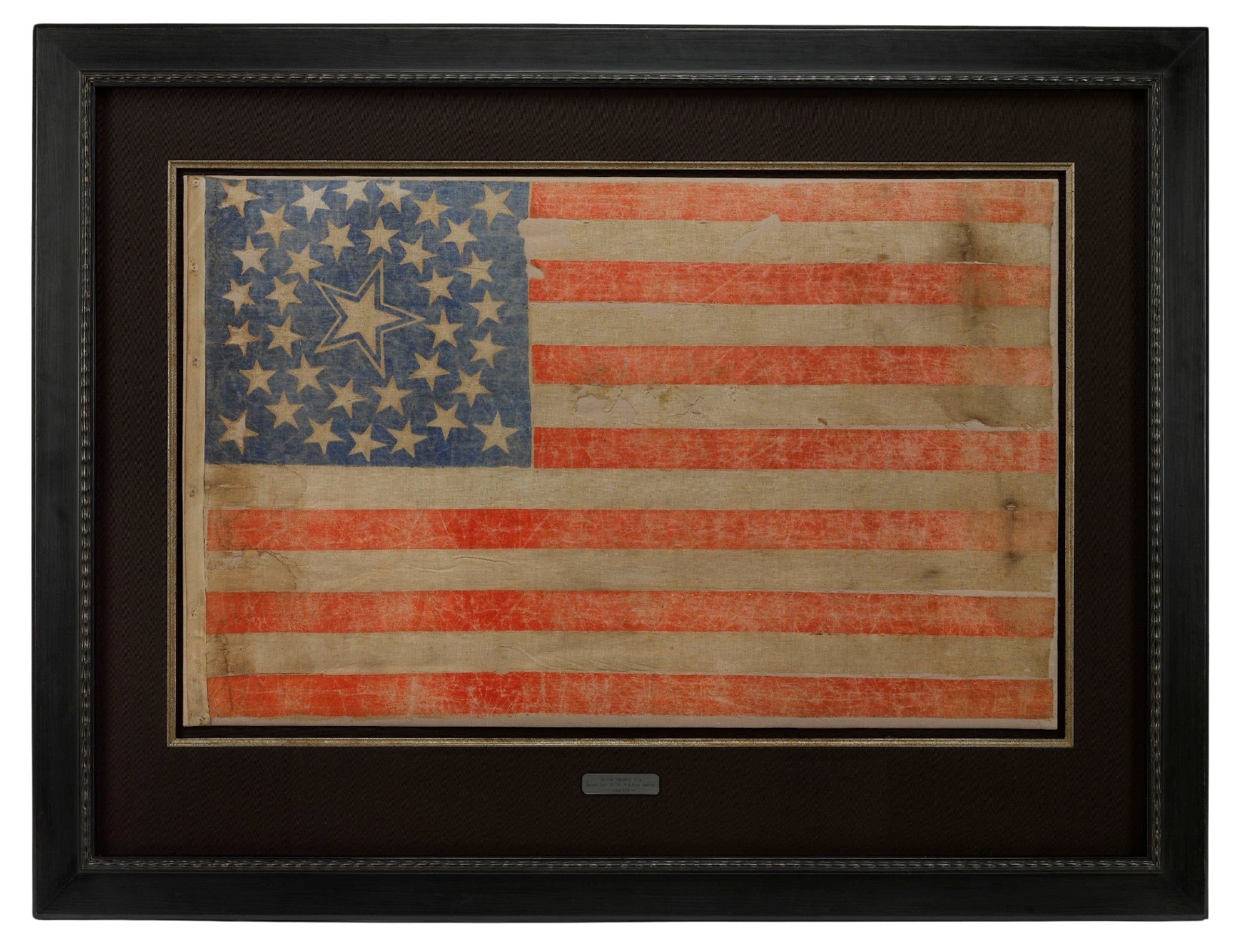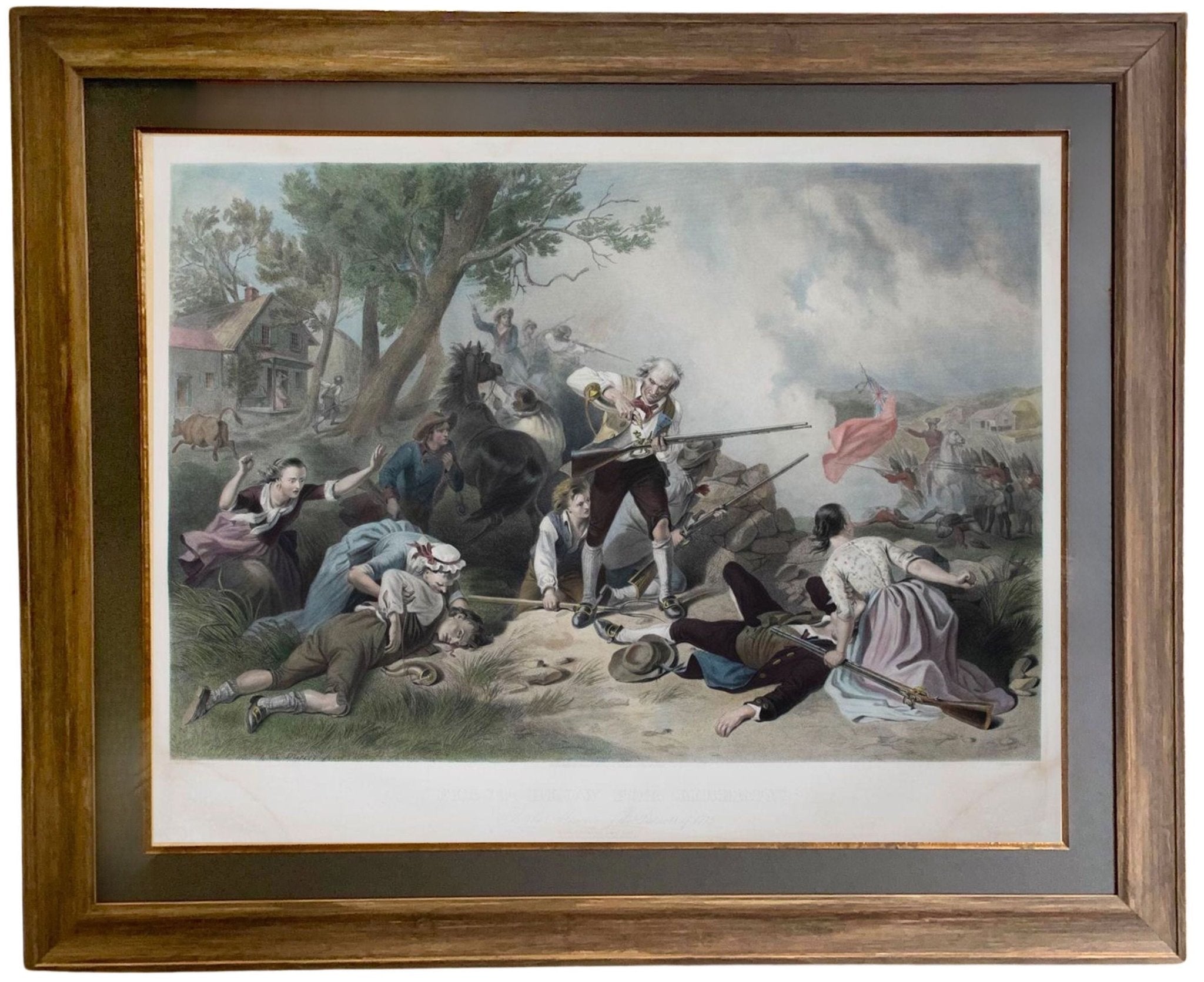Thomas Crawford's "Statue of Freedom"
Every visitor to our nation’s Capitol building will see Thomas Crawford’s iconic bronze “Statue of Freedom” sitting high atop the dome. Standing at a height of 19 feet 6 inches tall, this colossal allegorical statue serves as a symbol of “freedom triumphant– in war and peace.” And due to the popularity and importance of the sculpture and the building it tops, it is depicted in countless prints, paintings, posters, and photographs, from the mid-19th century on. The statue has an interesting history, both in its inspiration and construction.
In May of 1855, the American sculptor Thomas Crawford was commissioned to create a statue for the Capitol dome, currently under construction. Crawford created three small models; the third and final design was approved by Jefferson Davis in April 1856. The statue is an amalgam of early Roman and Native American symbolism. Crawford described her headdress as a version of a Roman helmet, "the crest of which is composed of an eagle’s head and a bold arrangement of feathers, suggested by the costume of our Indian tribes." The figure is wearing a draped dress, holding a shield, wreath, and sword, which together Crawford wrote represented “Armed Liberty.” She stands on a cast-iron pedestal topped with a globe encircled with the motto “E Pluribus Unum.” The lower part of the pedestal is decorated with Roman fasces and wreaths.
Crawford worked on the full-size clay model in his studio in Rome up until his death in 1857. His widow packaged and shipped the model in crates to the US in 1858. Casting for the statue began in 1860 at Clark Mill’s bronze foundry, located on the outskirts of Washington. Work was halted in 1861 because of the Civil War, but by the end of 1862, the statue was finished and was temporarily displayed on the grounds of the Capitol.
By late 1863, construction of the new iron dome was ready for installation of the statue, in sections. On December 2, 1863, after the final piece was added, the completed statue was celebrated with a thirty-five gun salute. Thirty five represented the number of stars President Lincoln insisted remain on the American flag, despite the rebellion and succession of the southern states. The statue has remained on top of the Capitol dome ever since, a symbol of strength and freedom.
We have a really fun selection of U.S. Capitol antiques- prints, paintings, autographs, posters, and more- with the stunning "Statue of Freedom" visible atop the dome. View (and shop) some of them below!
George H. W. Bush Signed and Inscribed 1989 Inaugural Photograph
"American Red Cross. Chartered by Congress" Vintage WWI Red Cross Poster by Franklin Booth, 1918
"Washington/ Pennsylvania Railroad/ Go By Train" Vintage Travel Poster, 1949
"U.S. Flag Behind Capitol" by Ron Sloan, Mixed Media Painting on Illustration Board, 1985
"Washington/ Go By Train/ Pennsylvania Railroad" Vintage Travel Poster













